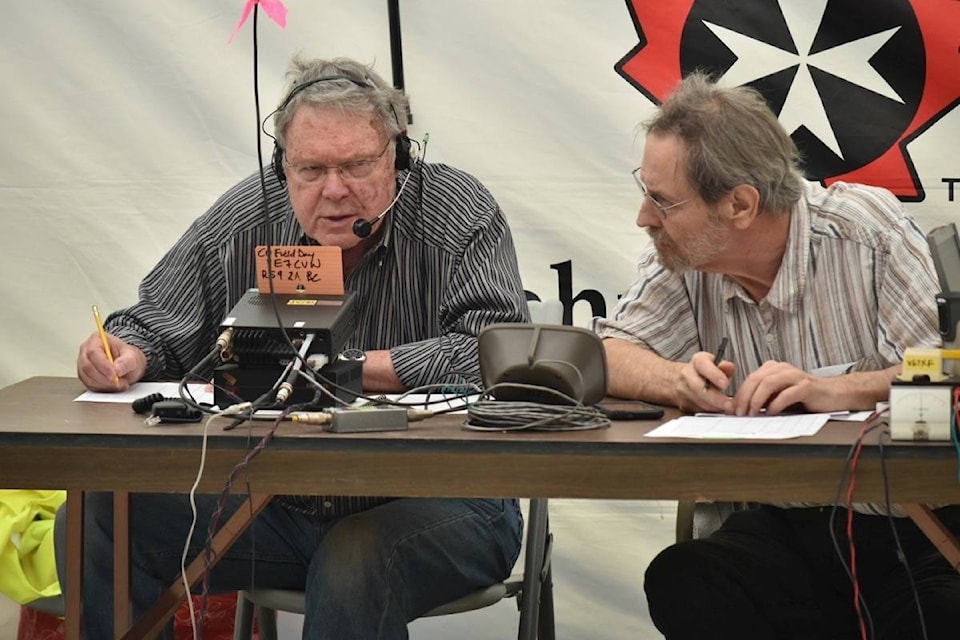While the technology has changed slightly over the decades, the consistent performance - particularly in disaster situations - of ham radio was on display at Filberg Park in Comox last month.
Members of the Comox Valley Amateur Radio Club participated in the annual International Field Day, an event showcasing the science, skills and service of ham radio operators.
“We made more than 1,000 contacts,” explained Scott Goodman, a member of the club and co-ordinator of this year’s local event.
Every June, more than 40,000 ham radio operators throughout North America set up temporary transmitting stations in public places for the event, which has been an annual one since 1933. Some operators use the day as a contest to see who can make the most contacts, while others use it to practise their emergency response capabilities.
RELATED: Local ham radio club hosting Field Day at Filberg in Comox
Goodman explained the history of the local club goes back at least to the 1960s and has its origins with former military members, who would use ham radio in their formal careers.
The event showcased one of the advantages of radio technology: its robust ability to maintain communications, particularly in emergency situations.
Ham radio operators can be the “eyes and ears in the community,” he noted, particularly when disasters strike. “People expect to rely on modern means of communication. In a disaster, those will almost certainly not work. Ham radio does not need any intervening infrastructure.”
While infrastructure such as the repeater radios on mountains like Mount Washington that relay radio signals can greatly extend the range of local communications and are a great asset, explained Goodman, direct radio to radio communications are still effective even if those assets are damaged or destroyed in a disaster.
Long range, even worldwide, communications via HF (shortwave) radio bounce their signals off the upper atmosphere and don’t require anything other than a transmitter on one end and receiver on the other.
Ham radio operators use both types, he noted.
Local governments also plan to rely on both types of radio in emergencies if and when normal communications fail. In fact, many ham radio operators volunteer directly with their local emergency program to support emergency communications.
Goodman noted ham radio has a long tradition of helping when disaster strikes. During Hurricane Katrina in 2005, for example, ham radio was the only communication available in the immediate aftermath.
Today, emergency programs are organized around the Incident Command System, a flexible management structure that can adapt to emergencies of any type and size.
“This really started with the California wildfires of about 30 years ago,” said Goodman. “Local jurisdictions have since formalized their emergency and disaster response plans, including how they work with volunteers, requiring ongoing training and meeting legal requirements such as police background checks.”
Within the Comox Valley, about a dozen club members are also formal frontline volunteers with the Emergency Program who can assist with radio communications in the Emergency Operations Centre.
In amateur radio, an individual operator needs a licence to begin communications; after receiving the licence the operator receives a radio call sign and the licence is valid for life.
Goodman said the licence is free, although an exam is required, and a knowledge of basic electronics is helpful.
The local club meets once a month on the third Thursday of the month from September to June, and it is always seeking new members, particularly younger members.
He noted the physics of radio hasn’t changed dramatically over the years, but rather the technology has evolved and improved.
“They’ve become more portable, refined, just like the normal progress of other electronics. Within the last 10 to 15 years, radio has also been going digital, and can carry multiple channels simultaneously on the same frequency.”
For more information on amateur radio or the Comox Valley Amateur Radio Club, visit comoxvalleyamateurradio.ca.
